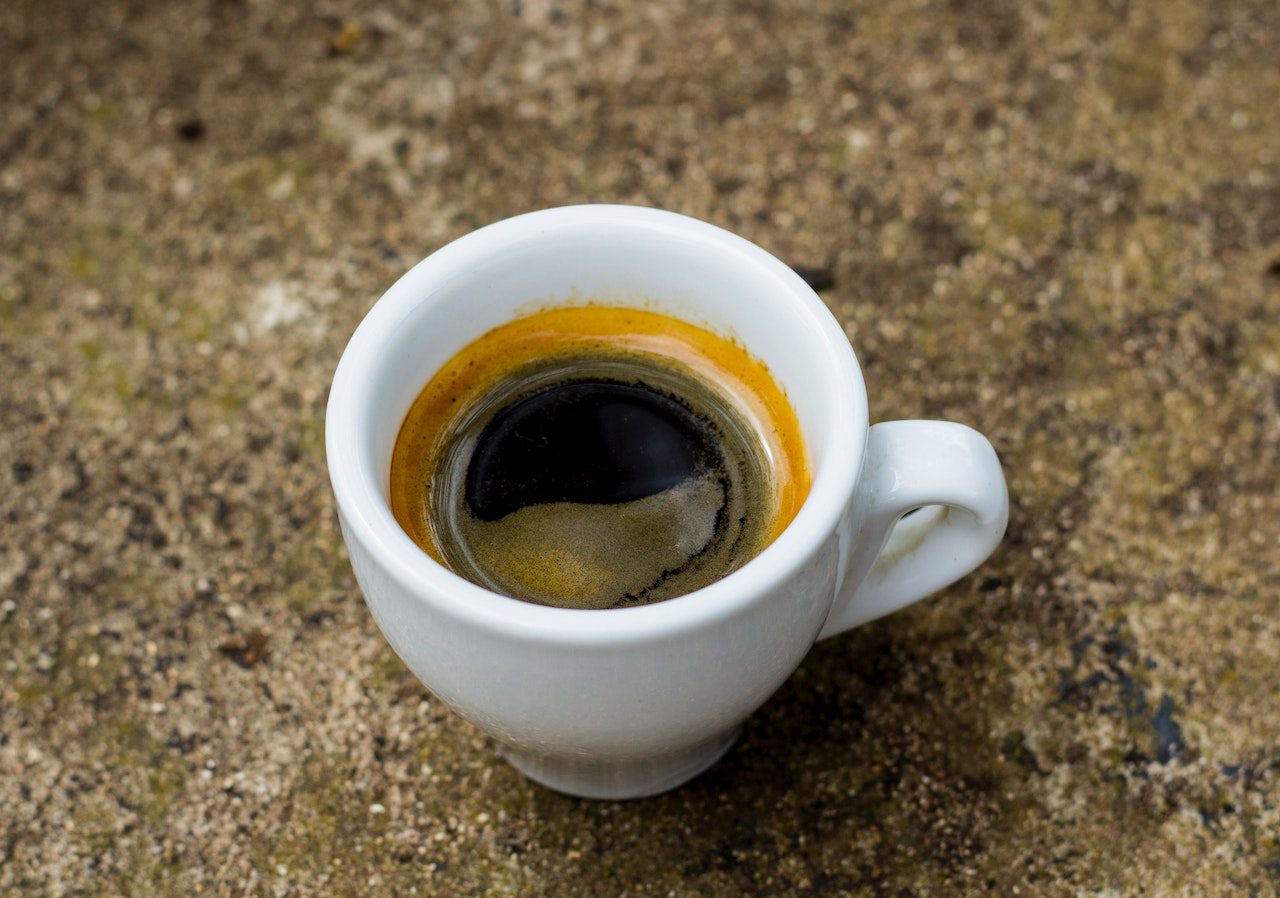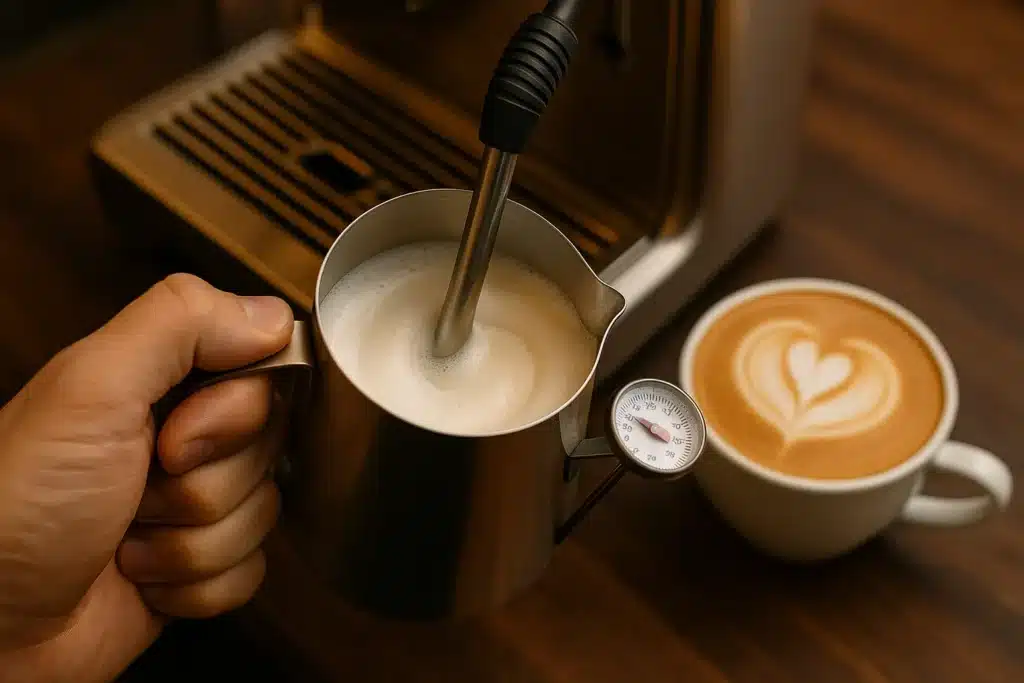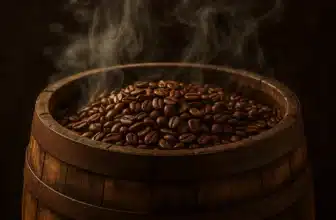
One Hundred Coffee is reader-supported, and some products displayed may earn us an affiliate commission. Details
Understanding The Basics of Espresso Brewing
Brewing a delicious espresso is an art form that requires a solid understanding of the basics. Firstly, ensure you have fresh coffee beans that have been recently roasted and ground to a fine consistency. Preheat your espresso machine and ensure it reaches the optimal brewing temperature, typically between 195-205°F (90-96°C). The right water pressure is crucial; aim for around 9 bars to extract the rich flavors and oils from the coffee grounds.

Who is this for?
Ideal for coffee drinkers who want great café-level results at home, this book covers brewing methods, gear, beans, and expert tips. Whether you’re using a French press, pour-over, or espresso machine, it helps beginners and enthusiasts master coffee-making without intimidation, ensuring a delicious cup every time.Next, pay attention to dosing and tamping. Use a scale to measure your dose accurately, aiming for about 18-20 grams of coffee per double shot. Tap the grounds firmly and evenly to create an even extraction. Timing is also key; aim for a total brew time of around 25-30 seconds. Lastly, experiment with different variables such as grind size, water temperature, and extraction time to achieve your desired flavor profile.
Selecting The Right Coffee Beans For Espresso
When it comes to brewing delicious espresso, choosing the right coffee beans is crucial. While any type of coffee bean can be used for espresso, certain beans are better suited to bring out the rich flavors and aromas that define a perfect shot. Firstly, opt for a medium to dark roast, as these beans tend to have more body and intensity, which are essential in espresso.
Look for beans that are specifically labeled as suitable for espresso or have tasting notes such as chocolate, caramel, or nutty flavors. Next, consider the origin of the coffee beans. Beans from regions like Brazil, Colombia, or Ethiopia often possess unique characteristics that complement the espresso extraction process. Brazilian beans offer a smooth and nutty profile, while Colombian ones provide bright acidity and fruity notes.
Lastly, consider whether you prefer single-origin or blended coffee beans.
Mastering The Art Of Grinding And Tamping
When it comes to brewing delicious espresso, the importance of grinding and tamping cannot be overstated. The consistency and fineness of your coffee grounds play a crucial role in extracting the perfect flavors from any coffee bean. Start by investing in a high-quality burr grinder, which ensures a consistent grind size. Experiment with different grind settings to find the ideal one for your taste preferences.
Once you have ground your coffee, proper tamping is essential for an even extraction. Use a tamper that fits snugly inside your portafilter basket and apply gentle, even pressure. Avoid pressing too hard or unevenly, as this can lead to channeling and inconsistent extraction.
Remember that practice makes perfect when it comes to mastering these skills. Take time to experiment with different grind sizes and tamping techniques until you achieve a balanced and flavorful espresso shot that showcases the unique qualities of your chosen coffee beans.
Techniques For Extracting Perfect Espresso Shots
If you’ve ever taken a sip of espresso that made your eyes widen and your heart skip a beat (in the best way possible), then you know what we’re chasing here. That silky crema. That deep, rich aroma. The balance of sweetness, acidity, and bitterness dances on your tongue.
Pulling the perfect espresso shot isn’t just a skill — it’s a journey. Whether you’re using a high-end machine or a beginner-friendly model like the Neretva 15 or 20-Bar Espresso Machine, this guide will walk you through every step of the process with real-world tips and a personal perspective. Because espresso isn’t just coffee; it’s an experience.
1. Start With Fresh, Quality Coffee Beans
Let’s start with the soul of every espresso shot: the beans.
Choose the Right Beans
Not all beans are created equal for espresso. While you can use any coffee beans, those labeled “espresso” are usually roasted slightly darker and offer a more robust, balanced profile ideal for pressure extraction.
- Medium-dark to dark roasts: These bring out deep chocolatey, nutty, or caramel notes — classic in espresso.
- Freshness matters: Look for a roast date, not just an expiration date. Ideally, you want to use beans within 2 to 4 weeks of roasting.
Grind Fresh — Every Time
Pre-ground coffee stales quickly. Invest in a good burr grinder and grind just before brewing.
- Espresso grind = fine but not powdery
- A consistent grind helps with even extraction. Avoid blade grinders that produce inconsistent particle sizes.
2. Dial In the Perfect Grind Size
Grind size is the #1 factor most home baristas need to tweak regularly. It can make or break your shot.
- Too coarse? Your water flows too quickly, resulting in under-extracted, sour shots.
- Too fine? The water chokes, and the shot takes too long, bitter and burnt.
Test and Adjust
Start with a 25-30 second shot time from when the pump activates (including pre-infusion, if your machine has it).
- If the shot is fast and watery, grind finer.
- If it’s slow and bitter, grind coarser.
The sweet spot is where the flavor sings — not too sharp, not too dull.
3. Master the Dose and Distribution
You can have the perfect grind and still miss the mark if your dose or tamp is off.
Dose Consistently
Weigh your grounds every time.
- Single shot: 7-9g
- Double shot: 14-18g
Most modern espresso lovers pull doubles, so aim for 16-18g of ground coffee in your portafilter.
Distribute Evenly
Uneven grounds lead to “channeling,” where water finds a path of least resistance and extracts unevenly. Not good.
Techniques:
- Use a distribution tool or simply tap the portafilter gently on the counter.
- Evenly level off with your finger or a flat edge.
4. Tamping: The Final Compression
Tamping compresses the coffee bed so that water flows evenly through the puck. It’s a simple motion, but it matters.
How to Tamp:
- Hold your tamper like you’re grabbing a doorknob.
- Apply 30 lbs of pressure (you don’t need a scale — firm but not brutal).
- Make sure it’s level. A tilted tamp = uneven extraction.
Bonus Tip:
Don’t polish the surface afterward. It can cause micro-fractures that lead to channeling.
5. Preheat Everything
Espresso is all about temperature control. Cold components suck the heat right out of your shot.
- Run hot water through your portafilter and cup before brewing.
- Let your machine warm up for at least 10-15 minutes.
Why? Hot espresso tastes sweeter. Cold espresso? Flat and sour.
6. Pull the Shot: Timing and Technique
Alright, moment of truth.
Standard Ratio: 1:2
- Start with a 1:2 brew ratio. That means for 18g of ground coffee, you want 36g of espresso in your cup.
- Your shot should take 25 to 30 seconds from pump start.
What You’re Looking For:
- The first drops should appear around 6-8 seconds in.
- Watch for that beautiful, honey-like stream.
- Stop the shot before it blooms (when it turns pale and watery).
7. Analyze the Crema and Taste
A well-pulled shot will have a thick, golden crema on top. This isn’t just pretty — it’s a sign of proper pressure and freshness.
Taste Test
- Sweet and syrupy? You nailed it.
- Sour and thin? Under-extracted (try finer grind, more time).
- Bitter and hollow? Over-extracted (try a coarser grind, shorter time).
The beauty of espresso is that you get instant feedback in every cup.
8. Frothing Milk (Optional But Delicious)

If you’re making a milk-based drink like a latte or cappuccino, steaming milk is a whole craft of its own.
Steam Wand Basics
- Use cold milk and a clean stainless steel pitcher.
- Start with the wand just below the surface to create microfoam (you’ll hear a slight hissing).
- Then lower the wand deeper to heat the milk to ~140-150°F.
Texture Goals:
- Lattes: Smooth, silky, paint-like milk.
- Cappuccinos: Light, airy foam.
Tip: Tap and swirl the pitcher to remove bubbles before pouring.
9. Clean as You Go
Good espresso is only possible with a clean machine. Residual oils and milk can ruin your next drink fast.
- Rinse your portafilter after every use.
- Purge the steam wand before and after frothing.
- Backflush your machine weekly (if compatible).
Trust me, your future espresso shots will thank you.
10. Keep Tweaking and Tasting
Perfecting espresso is a process of trial and error. Every variable — bean, humidity, water, grind, tamp — affects the shot.
Don’t get frustrated. Take notes. Adjust one thing at a time and taste the results.
My Favorite Tracking Tips:
- Keep a small notebook or use apps like Brew Ratio or Bean Conqueror.
- Write down the bean type, grind size, dose, shot time, yield, and your tasting notes.
Over time, you’ll build an intuition for what makes your perfect cup.
Bonus: Espresso Troubleshooting Guide
| Problem | Likely Cause | Fix |
|---|---|---|
| The shot is too slow | Grind too coarse | Grind finer |
| Shot is too slow | Grind too fine / overdosed | Grind coarser / reduce dose |
| Sour taste | Under-extracted | Grind finer / increase time |
| Bitter taste | Over-extracted | Grind coarser / decrease time |
| No crema | Stale beans / poor tamp | Use fresh beans / tamp evenly |
Final Thoughts: Your Espresso Journey Starts Now
Learning to extract the perfect espresso shot at home is part science, part art, and part self-discovery. Some mornings you’ll nail it. Others, you’ll scratch your head. But every single shot teaches you something.
So be curious. Be playful. Taste everything. And celebrate the small wins — that perfect shot with the thick crema, the rich body, the silky milk.
Because at the end of the day, it’s not just about the caffeine. It’s about the ritual. The joy. The satisfaction of saying, *”I made this.”






